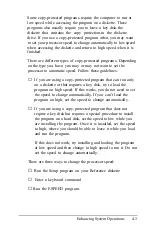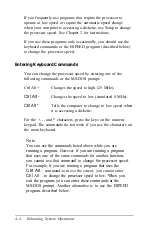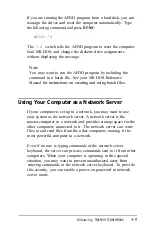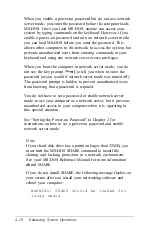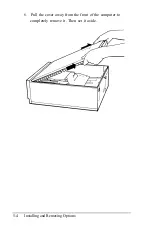
See your MS-DOS Reference Manual for instructions on
creating and using batch files.
Reassigning the Diskette Drives
If your system has two diskette drives, they are connected inside
your computer so that the top drive is A and the bottom drive is
B. Because drive A is the “boot” drive, whenever you want to
load the operating system or a bootable program from a diskette,
you must insert the diskette into drive A.
If both of your drives are the same type–5¼-inch, 1.2MB
capacity, for example-you never need to reassign the drives. If
your two drives are different types, however, you may need to
change the drive letter assignments so you can boot the
computer from drive B. For example, you may have a 3½-inch
program disk which you need to use to boot the computer. Or
you may have an application program that requires you to leave
the 3½-inch key disk in drive A while you run the program.
For these situations, you can reverse the drive assignments to
make the top drive B and the bottom drive A. There are two
ways to do this:
❏
Insert the diskette in the drive you want to boot from and
turn on the computer. The drive automatically becomes
drive A.
❏
Run the AFDD program to reassign the drive. See “Using
the AFDD Program,” below, for instructions.
Your assignments remain in effect until you press the
RESET
button or turn off the computer, or until you reassign the drives
to their original assignments. The reassignment remains in effect
if you reset the computer from your hard disk by entering the
Ctrl Alt Del
command.
Enhancing System Operations
4-7
Summary of Contents for Equity 386/25
Page 1: ......
Page 3: ......
Page 14: ...xii ...
Page 20: ...6 lntroduction ...
Page 63: ...Hard disk drive types continued Running the Setup Program 2 25 ...
Page 142: ...5 34 lnstalling and Removing Options ...
Page 248: ...C 14 Physically Formatting a Hard Disk ...
Page 298: ...F 6 Specifications ...
Page 326: ......











